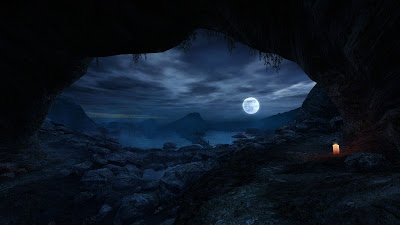Quando comecei a ver percebi ao fim de pouco tempo que estava perante mais um filme experimentalista no campo narrativo, comparável a Inception, e por isso mesmo a minha reação foi imediata - parar de tentar compreender o filme, de dar sentido a tudo o que estava a ver no ecrã e simplesmente deixar-me levar pelo filme. Permitir que os autores brincassem com as minhas ideias, me lançassem no meio daquela explosão de significados, sensações, personagens e acções.
A decisão foi a mais acertada simplesmente porque o filme está construído para ser sorvido dessa forma. Toda a direção, montagem e música nos envolve, nos conduz ao longo das seis histórias, de modo a conseguirmos ganhar uma ideia do todo, sem contudo termos de perceber todos os detalhes. É um trabalho magistral que aqui temos, conseguir interligar tantas diferenças num único fio e dar-lhe uma lógica, criar uma experiência integral, coesa e una para o espectador. Fantásticos irmãos Wachowski e Tom Tykwer. Para quem quer compreender o sentido do filme, ele está todo condensado nesta pequena frase dita mais perto do fim do filme, por Somni,
“Our lives are not our own. We are bound to others, past and future. And by each crime and every kindness, we birth our future.”Mas Cloud Atlas não é para ser interpretado em grandes prosas, foi feito para ser contemplado. Muito do que diz depende daquilo em que cada um de nós acredita. Neste sentido Lana Wachowski diz-nos que
"…we’re wrestling with the same things that Dickens and Hugo and David Mitchell and Herman Melville were wrestling with. We’re wrestling with those same ideas, and we’re just trying to do it in a more exciting context than conventionally you are allowed to. [...] We don’t want to say, 'We are making this to mean this.' What we find is that the most interesting art is open to a spectrum of interpretation." [fonte]A montagem e a direcção são magistrais, mas o trabalho de make up é brilhante. Ver os vários actores encarnar tão diferentes personagens, é verdadeiramente virtuoso. Uma prova de fogo das suas competências, mas também de um trabalho enorme realizado pelo departamento de make up. O que mais achei interessante no make up, foi raramente ver a perfeição da pele, mas antes cicatrizes, deformações, e problemas que sugerem a existência de vida passada por aqueles personagens.
Cloud Atlas deverá ser o filme independente, Europeu, e Alemão mais caro de sempre, foram 100 milhões de dólares, algo apenas reservado à elite de Hollywood. Os Wachowskis filmaram a história do século 19 e as duas no futuro, enquanto Tykwer dirigiu a histórias dos anos 1930, 1970 e do presente 2012. O filme tem quase três horas, e o texto original é de David Mitchel.






























.jpg)











